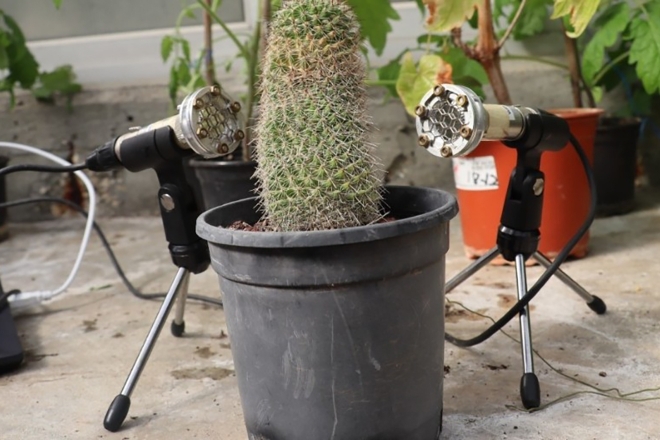Plants cry when they’re stressed. Listen to them weep.
Researchers recorded the sounds that plants emit when facing stresses like dehydration or a cut

Much like humans, plants emit sounds when they’re sad or stressed. Only the Kingdom Plantae cries a little differently since plants lack two lips and all. But you don’t need a mouth to complain, and plants instead give off pops and clicks at a volume similar to human speech (or the cordyceps heads in The Last Of Us)—it’s just too high for our ears to hear.
During the experiment, led by Itzhak Khait, a plant scientist at Tel Aviv University, and published in a journal called Cell, he and his team put plants like wheat, corn, cactus, henbit, tomato, tobacco and the grapevine that makes Cabernet Sauvignon in an acoustic box. Hence, the plants were free from any background noise and had two microphones pointing at their stems. Once in the box, the plants were subjected to different treatments: some had not been watered for five days, others had their stem cut and some were untouched as part of a control group.
The instruments used in testing could pick up frequencies between 20 and 250 kilohertz, which is more than 15 times higher than what we—humans—can hear (around 20-30 kilohertz). The plants emitted sounds between 40-80 kilohertz, with the happy plants giving off less than one sound per hour on average. But those that were injured or dehydrated were letting out dozens of sounds every hour, sometimes between 30–50. And the thirstier the plants got, the louder they complained. In fact, some of the sounds were so specific that an AI machine-learning tool knew if the plant was thirsty, cut, or part of the group based only on the pattern of its acoustic vibrations.
A groundbreaking TAU study found that #plants emit sounds, especially when in distress, at frequencies too high for us to hear. #AI was used to distinguish different plants' #stresscall. https://t.co/2KTmjawdTT@TauPlantSci @CellPressNews @of_sagol pic.twitter.com/PkGSRDhnob
— Tel Aviv University (@TelAvivUni) March 31, 2023
Researchers also believe these ultrasonic sounds may be audible to animals and plants as far as 16 feet away, meaning plants could be acoustically communicating with the ecosystems around them. The research team says that this groundbreaking study could also help scientists and farmers understand how plants interact with their environments, especially in drought conditional due to climate change, where efficient water use becomes even more critical for both food security and ecology.
“We suggest that more investigation in the plant bioacoustics field, and particularly in the ability of plants to emit and react to sounds under different conditions and environments, may reveal a pathway of signaling between plants and their environment.”
So next time you forget to water your plants, remember that they are quietly crying in the corner—you’re just choosing to ignore them.
[Image via Lilach Hadany]
Olivia Wycech is Mixmag Asia’s Culture Editor; follow her on Instagram


